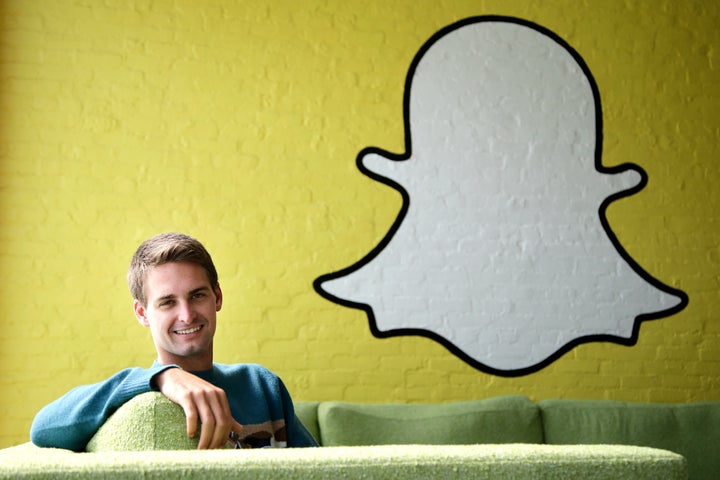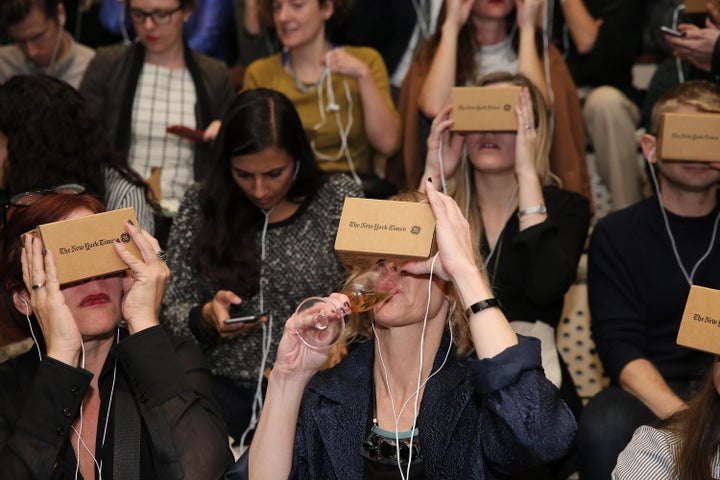It's a busy time for journalism.
The Great Traffic Scramble is still going strong, and we're all looking for the next big platform to help generate more engagement with our content.
The past year was an especially exciting one, with a slew of new apps and tools to help empower both publishers and the general public with their storytelling. With the advent of Periscope and Meerkat, the ongoing evolution of virtual reality and a host of new platforms to share news, the game really was changed in 2015.
Periscope and Meerkat

These two apps fundamentally changed the reporter's basic toolkit. Live streaming video used to require a satellite truck, an expensive camera and a news network base of operations. Now anybody can stream video from their phones, and as Periscope and Meerkat grow in popularity, anyone can be a reporter or a star.
With Periscope -- which Twitter acquired this year for about $100 million -- users are already capturing crimes; broadcasting, uh... crimes; and giving all their followers exclusive access to press events. The apps are poised to change the presidential race, as candidates will be expected to live stream every minute of their campaigns.
Meanwhile, big companies are using live-stream apps to tease products, and the business side is scrambling to capitalize on the "social currency" of live events, Digiday reports.
Don't forget to follow us on Periscope!
Snapchat's 'Discover' feature

We were super hyped about Snapchat's news feature when it launched in January. Discover, as the feature is known, essentially gives news organizations their front pages back, allowing editors and reporters to choose the stories they think are most important to put in front of readers, as opposed to Facebook algorithms deciding what's important based on likes and shares (the debate over whether that's a good thing rages on).
Discover suffered some surprising growing pains in October as Snapchat shut down its own original content platform and laid off employees, but it seems to have bounced back. The feature is adding more and more new publishers (the list of 17 includes CNN, VICE News, The Wall Street Journal and Cosmopolitan), all of which are vying for the attention of Snapchat's millennial audience, Re/code reports.
Many questions remain unanswered: Will Snapchat be a traffic grab for news companies? Will editor-driven content be an eye-opener for people who usually get news from their Facebook feed? Will Snapchat come up with its own algorithm and put its content behind a pay wall? We'll find out.
Virtual reality

In 2015, humanity got one step closer to having a 360-degree view of Kim Kardashian's treasure trove of Christmas gifts.
Joking aside, it was a banner year for virtual reality, and there's no doubt that it will change the way news organizations deliver information to you. The technology is already available: All you need is a cheap Google Cardboard VR headset, your smartphone and a downloadable copy of The New York Times' first VR film, "The Displaced," and you can see the global refugee crisis through the eyes of the children experiencing it.
“The New York Times has been telling stories for 164 years,” company CEO Mark Thompson said in November during the film's launch party. “This feels like one of those grand moments where the way you tell stories has changed.”
More powerful VR headsets are on the horizon. Preorders for the Oculus Rift could begin as soon as next month, and the HTC Vive and Playstation VR headsets are slated to hit the market next year. They'll bring with them a bunch of new media to digest, from video games and movies to -- we hope -- fascinating and informative news content.
Facebook's Instant Articles and notifications

Snapchat might be vying for your news feed, but Facebook is still one step ahead of the social game.
Its new Instant Articles feature hosts stories directly from several news outlets -- including The Huffington Post -- meaning your news loads a lot faster and gets displayed right in your Facebook app. Facebook hopes that will keep you on its site longer, and publishers hope it'll bring more engagement to the content that they're already posting to Facebook.
Some see the idea of big platforms guiding news as a scary one -- but where there's new technology and new ways to generate traffic, there are publishers looking for more of the pie.
If that's not enough to keep your face glued to your phone, Facebook's new notification system is also trying to be your Google. Using location data and content that you've "liked," Facebook's notifications will now tell you what events, food, weather and news are in your area.
What Is Code?
Code is everywhere. It affects everyone. And yet most people know little or nothing about how it works.
Bloomberg Businessweek published the 38,000-word primer "What is Code?" in June to try and end the mystery.
It was a huge success. The online version of the opus allows anyone -- from developers to civilians -- to try coding for themselves, and the story garnered more traffic than any other article since the launch of Bloomberg's business site.
HuffPost's Gabriel Arana wrote in July:
The forethought is clear when reading the piece online. The interactive components seem almost timed to anticipate when the reader’s attention span will drop off -- just when you’re about to tune out, for instance, the avatar pops up to coax you along.
“One of the things I’ve said is, ‘I don’t want to see a magazine page on the Web,” said Bloomberg Digital Editor Joshua Topolsky, who described the relationship between the print and online operations as “fluid.”
Try it yourself by clicking here.
